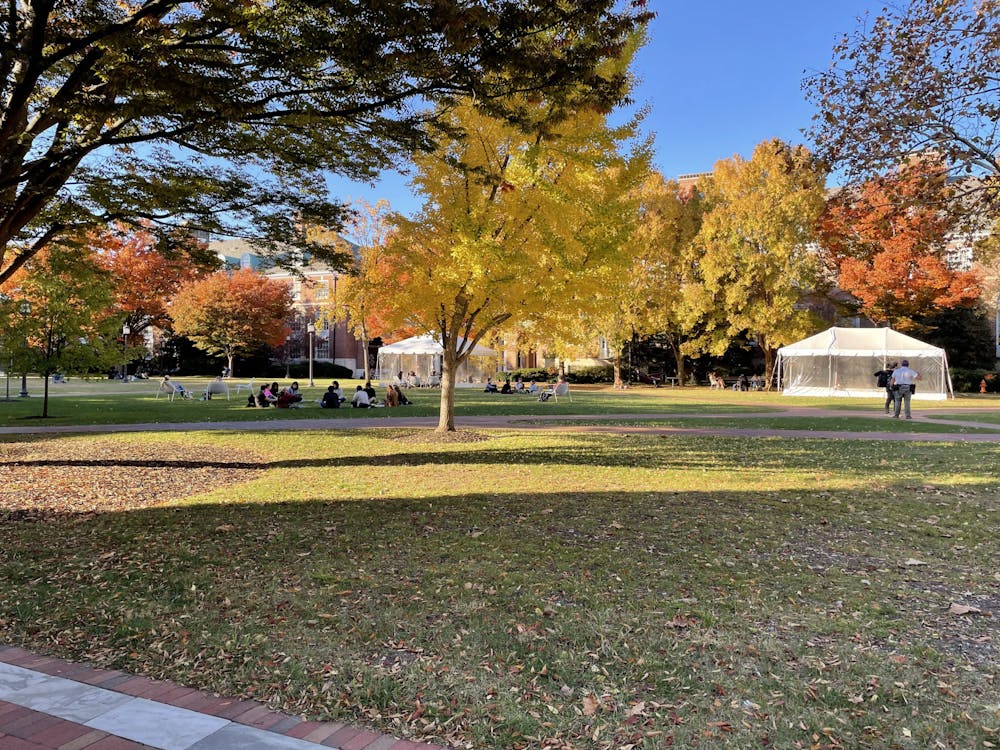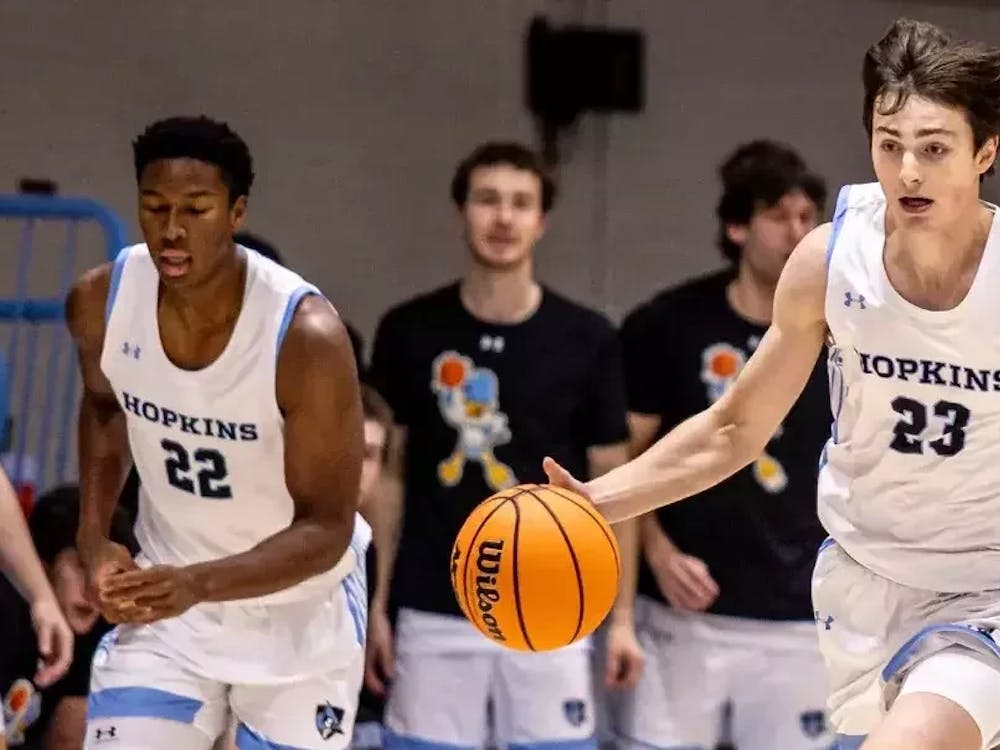Over winter break, the University made multiple updates to its COVID-19 policies, including upgrading its masking requirements, implementing twice-weekly COVID-19 testing and reducing isolation periods to five days for those asymptomatic on the fifth day. Recently, the University announced that affiliates must also test negative for COVID-19 in order to leave isolation on the fifth day.
In interviews with The News-Letter, faculty members and students shared their opinions on the beginning of the semester.
Anna Durbin, professor of international health and director of the Center for Immunization Research, expressed her trust in the University’s guidelines for the in-person spring.
“The University has tracked COVID cases very efficiently and has worked diligently to try to reduce the spread of COVID on campus, and that included a vaccine and booster mandate,” she said. “Recently, with information coming out from CDC, the encouragement and requirement for affiliates to wear KN95s and N95s coupled with making those masks available to students has been helpful.”
Because of the spikes in COVID-19 cases, some college campuses delayed campus openings and the return to in-person learning. Others, including Hopkins, decided to move forward with face-to-face instruction.
Durbin noted that the recent surges of the Omicron variant have posed obstacles to progress. According to Durbin, the Omicron variant is more virulent than other COVID-19 strands. She encouraged affiliates to continue proper masking etiquette and hygiene and stressed the importance of booster vaccinations.
Like Durbin, Andrew Perrin, professor of sociology in the School of Arts and Sciences, encouraged students to continue following University guidelines to allow for in-person learning experiences in an email to The News-Letter.
“Between the frequent testing, the vaccine mandate, and the mask mandate, that's enough for us to be able to do our work safely,” he wrote. “There's no substitute for the close interaction of a great class, so I really hope we are able to stave off Omicron to have more and more opportunities for in-person learning and conversations.”
However, many students noted confusions with the University’s COVID-19 decisions for this semester. In an email to The News-Letter, senior Jordan Adams-Campbell stated that for students, the current quarantine policy seems contradictory.
“Early on in the first week of class, I was feeling sick and assumed I had COVID-19. I was given notice that I should be in immediate isolation before my test results came, but when I requested isolation housing, I was told I needed a positive COVID-19 test,” they wrote. “I luckily did not have COVID-19, but because I was still having symptoms, I was told to continue isolating. It doesn’t make sense that I am required to isolate but cannot receive housing. If I did have COVID-19, then I could have possibly passed it to others.”
Adams-Campbell highlighted that students experiencing symptoms should immediately be given isolation housing as soon as they report it to the University. They suggested that the University should take more drastic measures — including lockdown — if it does not have the resources to provide isolation housing.
In an email to the student body on Jan. 14, Vice Provost for Student Health and Well-Being and Interim Vice Provost for Student Affairs Kevin Shollenberger highlighted that the University cannot guarantee isolation housing to students living off-campus.
Freshman and international student Rawan Elshobaky found the isolation period and quarantining process to be unclear. She explained that she felt sick before returning to campus but received a negative COVID-19 test before move-in. She was cleared to go to her dorm but then received a positive test the next day.
Elshobaky recounted her worry when receiving the test results, especially because she had been in close contact with other students.
“Most international students aren’t boosted yet because we got our first vaccine at Hopkins. For me and my friends, the next 14 hours were very stressful,” she said. “I received my results at 9 p.m., but the COVID hotline closed at 7 p.m., and I kept getting automatic replies when trying to call.”
The semester began with no indoor dining and no guests allowed in residence halls. As of Jan. 31, indoor dining resumed at 50% capacity at the Fresh Food Cafe, Nolan’s and Peabody Dining. Beginning on Feb. 7, affiliate guests were allowed as guests in residence halls.
Senior Paloma Tamayo Jimenez voiced concerns regarding the University’s decision to continue in-person activities in an email to The News-Letter.
“Hopkins staying open puts everyone at risk, including workers and students,” she wrote.
She encouraged Hopkins to support its Baltimore community by allowing people in surrounding neighborhoods to receive a mask through the mail to avoid direct contact.
Junior Eleanor Franklin also called on the University to share its resources with the city.
“The University is bringing in a bunch of young people into the city who are going to be going out into the community and contributing to the spread,” they said. “People wait for hours in the freezing cold at privately owned urgent cares to get a rapid test...[Hopkins] should absolutely be donating these to the public while opening testing sites open to the public.”
In an email to The News-Letter, Vice President for Communications Andrew Green described the University’s plans to share its testing resources.
“We will be distributing more than 3,000 rapid COVID test kits through partner groups,“ he wrote. “Additionally, Johns Hopkins has for the last two years conducted extensive community-based testing, with an emphasis on vulnerable or high-risk populations, as well as community vaccination clinics at multiple locations in Baltimore in conjunction with the city and other partner organizations.”
Despite the concerns that students voiced over the isolation housing and the quarantining process, many shared their satisfaction with the change to twice-weekly COVID-19 testing.
Freshman Maria-Noëlia Herne shared how consistent COVID-19 testing has provided some reassurance during times of uncertainty.
“Coming from Florida, it would take hours or even days to take a simple PCR or rapid test. It was hard to find testing centers and available appointments,” she said. “At Hopkins, testing is so accessible and makes being on campus reasonable.”
Adams-Campbell agreed that the testing accessibility at Hopkins is appreciated among students; however, they noted that it is important non-affiliates are able to access testing as well.
“Hopkins should extend its resources to allow free and accessible tests across all of Baltimore City, especially the neighborhoods within a one-mile radius of the Homewood campus,” they wrote. “We’re too stuck in our bubble to recognize that a positive test on campus does not mean it stays on campus.”





